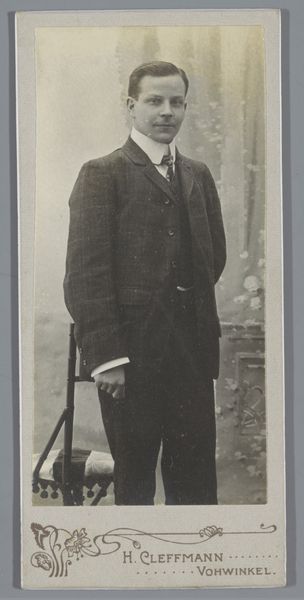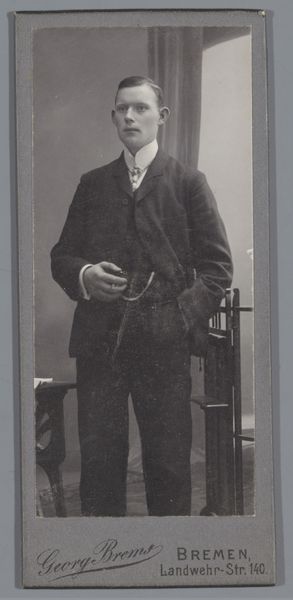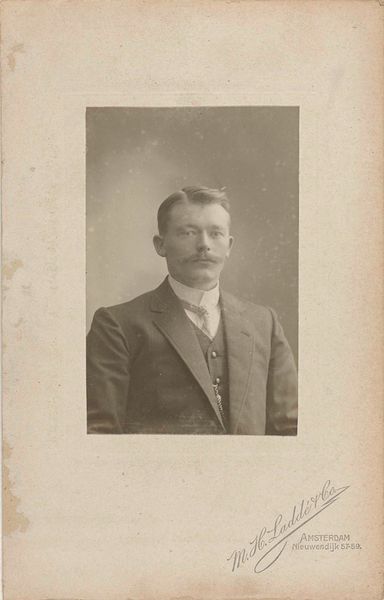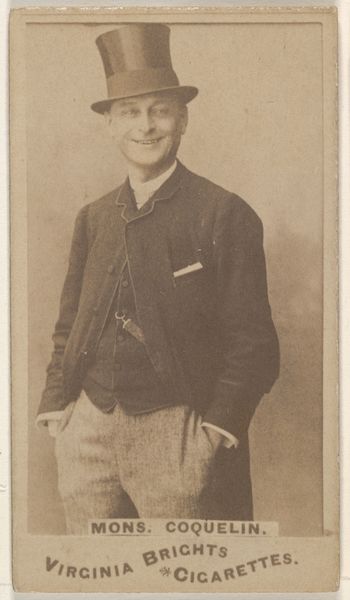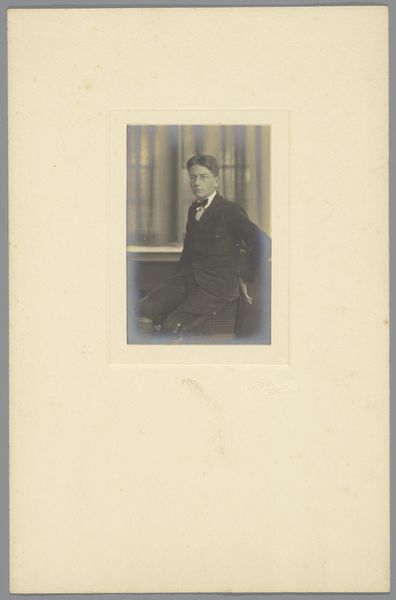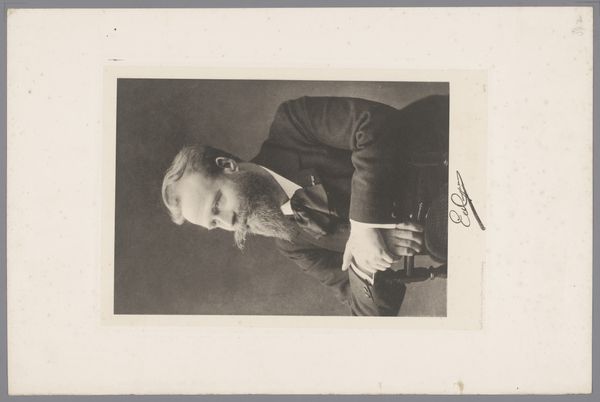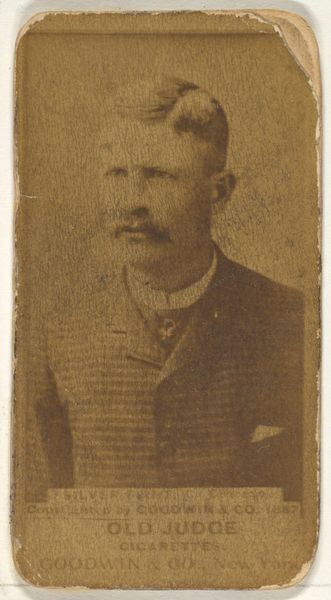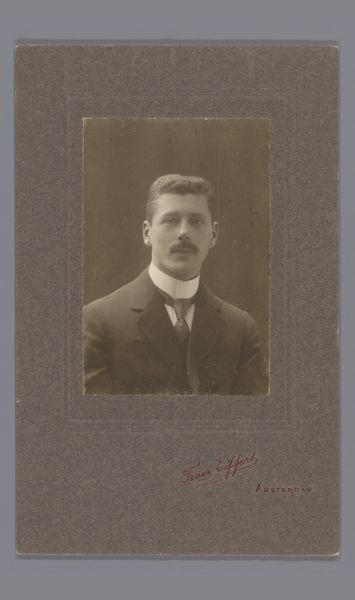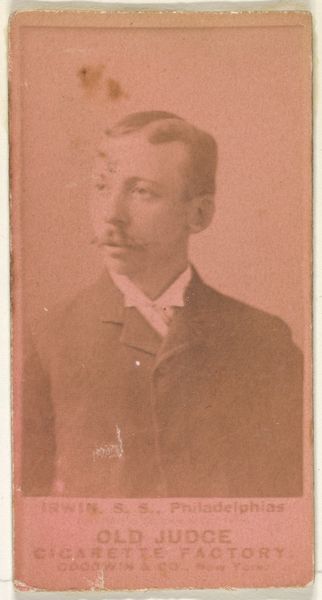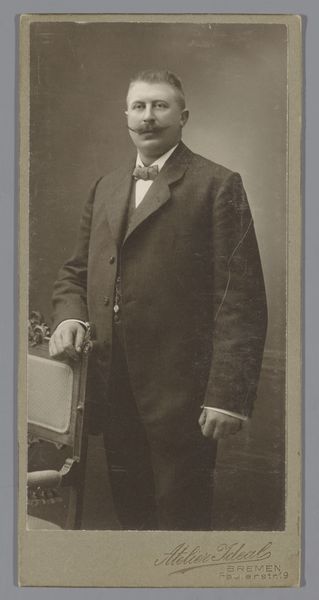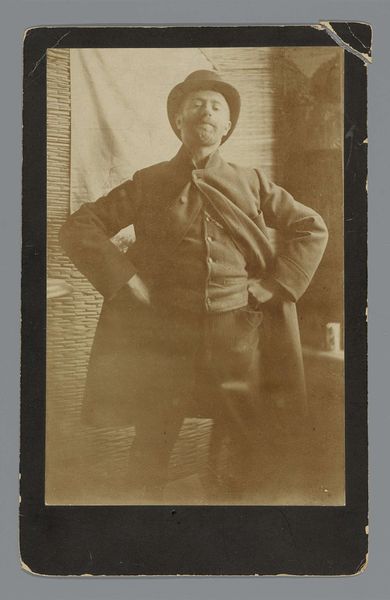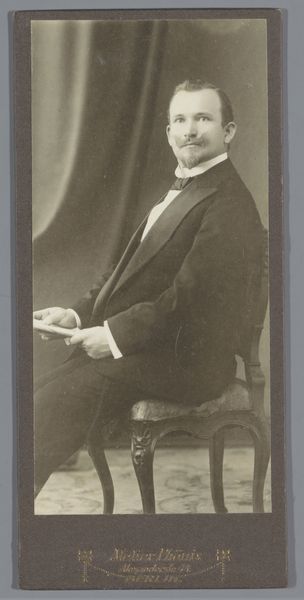
print, photography
# print
#
photography
#
photojournalism
#
19th century
Copyright: Rijks Museum: Open Domain
Curator: We're looking at a newspaper clipping from the archive of Philip Zilcken, dating from after 1910. It's a photo and text, an obituary really, for the artist Bart van Hove. Editor: It's quite a somber little rectangle, isn’t it? The grey tones are muted, and the man's face has a strong downward gaze as if lost in thought or grief. There's something melancholic about it. Curator: Indeed. It gives us a peek into the cultural circles of the time. Van Hove, born in 1850, was quite prominent. He studied under Jozef Geefs, moved around Antwerp and Paris, even studied in Italy before holding some prestigious positions such as director of the Quellinus School of Arts and Crafts in Amsterdam. Editor: I'm noticing the printing quality, it lacks high resolution yet possesses a tangible grainy feel. It gives him this noble demeanor. Note also how that crisp typeface conveys information in the clearest manner, while above him hovers the solemn plus sign. It anchors it firmly as an announcement of mortality. Curator: Exactly! And he was a professor at the Rijksakademie as well as chairman of Arti et Amicitiae, so quite involved in the art societies. It tells you much about how influential artistic figures were embedded within the educational and social frameworks. The announcement even lists his sculptures, from statues of royalty to depictions of famous contemporaries like Bosboom and Bles. Editor: There's such a stark contrast in texture, too. The soft gradients of the photographic image juxtaposed against the blocky printed words. It emphasizes their separate functions: visual portrayal versus informational conveyance. It makes you realize this isn't just memorializing a face, but chronicling achievements and statuses. Curator: What's fascinating is that we, today, see not only a historical record of Van Hove’s death but also Zilcken's collecting habits, shedding light on art world networks. Zilcken saw worth in maintaining ephemera such as this – viewing it as something significant to archive. Editor: A good eye from Zilcken to preserve it for analysis a century later. And when you break down this photograph and textual coupling, it becomes so multifaceted beyond simply recording history or commemorating loss— it’s about contrasting artistry with functional language within somber yet distinguished aesthetic sensibilities.
Comments
No comments
Be the first to comment and join the conversation on the ultimate creative platform.
